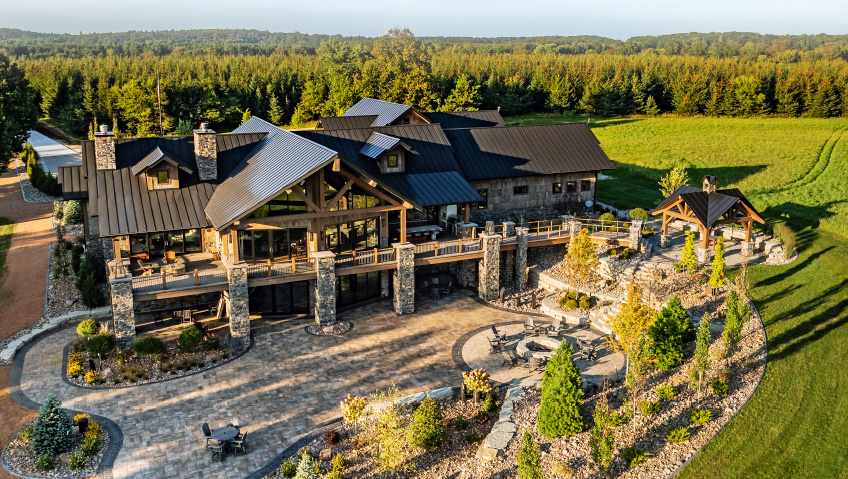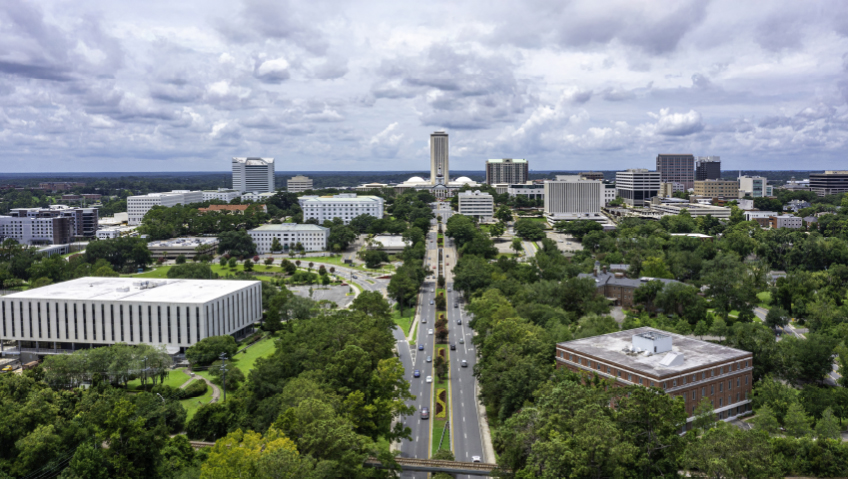When people describe Marinette County as an outdoor paradise, it’s no exaggeration. Nestled in northeastern Wisconsin, the county is a natural haven where adventure meets community, and economic resilience is driven by both wild rivers and factory floors.
From cascading waterfalls and whitewater rafting to vibrant manufacturing hubs and innovative housing initiatives, Marinette County’s unique blend of natural and economic assets makes it one of the most dynamic places to live, work, and play in the Upper Midwest.
The county’s natural beauty is a core part of its identity and a powerful economic driver. Known as the “Waterfall Capital of Wisconsin,” Marinette County boasts 15 distinct waterfalls and some of the best whitewater rafting in the Midwest. Outdoor recreation is a year-round experience here, with Class IV rapids in spring, ATV and UTV trail riding in the summer, vibrant foliage for fall color tours, and snowmobiling in winter. Each season invites a new wave of tourism that bolsters small businesses across the county.
The outdoor economy especially supports the northern half of the county, where small towns depend on trail access and seasonal traffic. While snowfall has been unpredictable in recent years, Marinette County has doubled down on efforts to diversify its outdoor offerings, most notably through the development of a new mountain biking trail system.
“Mountain biking was something we didn’t have in the area,” says Autumn Timblin, Marinette County’s Economic Development and Tourism Director. “We built a trail system that currently has 15.5 miles, but there are plans to expand it up to 50 miles to help attract more visitors to the northern region.”
This initiative is part of a broader strategy to promote year-round visitation and increase quality-of-life opportunities for both residents and tourists. By investing in new recreational infrastructure, Marinette County is positioning itself not only as a weekend destination but as a desirable place to live and work long-term.
That emphasis on livability is becoming increasingly important. Like many rural counties, Marinette faces challenges related to workforce housing, childcare, and talent retention, particularly in its more industrialized southern half, where manufacturing plays a dominant role. Employers are growing, but many are struggling to recruit due to a shortage of affordable, quality housing.
To address this, the county is working in partnership with WEDC and Inventure North through the Thrive Rural Wisconsin program to develop a housing playbook tailored to small communities. The goal is to identify viable sites, funding mechanisms, and scalable models that can be implemented countywide. “There’s no one-size-fits-all solution,” Timblin notes. “But we’re documenting every step to help other small communities identify what’s feasible for them.”
Communities like Wausaukee and Peshtigo have already begun laying the groundwork for new developments, working alongside the county to attract developers and understand what modern workers are looking for. Whether it’s duplexes, townhomes, or smaller-scale apartment buildings, the county is focused on creating housing that supports a diverse workforce.
“The goal isn’t just to build more housing,” Timblin adds, “it’s to build the right kind of housing that fits each community and gives people a reason to stay.”
That same sense of practicality and forward thinking is also shaping workforce development efforts. Local school districts and Northeast Wisconsin Technical College Marinette are actively collaborating with area businesses to provide more direct career pathways for students, particularly in the trades. With manufacturing remaining a cornerstone of the regional economy, especially in industries like metal fabrication and shipbuilding, there is strong demand for skilled labor.
Programs that connect students with employers early on are gaining traction, helping young people understand that they can build a fulfilling, well-paying career right in their hometown. Some schools are incorporating work-based learning and internships into their curricula, giving students hands-on experience in sectors like engineering, automation, and CNC machining.
As remote work grows in popularity and more people seek balance between work and quality of life, Marinette County is seizing the opportunity to position itself as a place to grow roots and build a future. A growing number of remote professionals and entrepreneurs are discovering that the area’s scenic beauty, strong sense of community, and low cost of living provide a compelling alternative to larger metros.
Beyond workforce and housing, broadband access remains a top priority. Many parts of northern Marinette County still lack high-speed internet, making it difficult for families, students, and remote workers to thrive. Without reliable connectivity, entire regions risk being left behind in an increasingly digital economy. To close the digital divide, the county is involved in aiding internet providers to pursue state and federal grants in order to bring connectivity to unserved and underserved areas. The long-term vision is not only to support education and business but also to attract more remote workers and families seeking a rural lifestyle without sacrificing convenience.
“In today’s world, broadband is just as essential as roads or electricity,” says Timblin. “It impacts everything from telehealth to education to economic development.”
Supporting families also means solving another longstanding rural challenge: childcare. Lack of accessible, affordable childcare remains a barrier for many working parents. Marinette County is exploring regional solutions to create more options that align with family and employer needs. Discussions include shared childcare cooperatives, extended-hours programs, and potential incentives for employers to invest in childcare services.
Indeed, economic development in Marinette County is holistic in nature, tied as much to family-friendly amenities and natural beauty as it is to job growth and business attraction. In fact, some of the county’s most compelling features are intangible: the slower pace of life, tight-knit communities, and opportunities for connection.
“People are really looking for that connection,” Timblin shares. “And when you have that, along with beautiful outdoor spaces and great employers, it becomes a compelling place to stay.”
The social fabric of the county is woven through long-standing traditions and community events such as firemen’s picnics, county fairs, farmers markets, and holiday parades. These events not only boost local economies but also reinforce a sense of place and identity. For newcomers, this authenticity often makes Marinette County feel like home faster than expected.
The county’s downtowns are another area of focus, and it is working to activate its Main Streets through business incentives, building reuse, and beautification projects. By reinvesting in small business corridors and encouraging mixed-use development, the region hopes to draw more foot traffic, new residents, and a stronger sense of place.
In Marinette itself, downtown revitalization efforts could include updating façades, promoting pop-up shops, and encouraging events that bring the community together such as food truck Fridays, night markets, and live music. “Our goal is to eventually create vibrant downtowns that feel welcoming and support small business growth,” says Timblin. “When people see energy in a downtown, they want to be part of it.”
The marketing approach is evolving too. Rather than relying solely on printed brochures or billboards, the county is embracing digital storytelling to showcase real people and experiences. Videos and social media content highlight hikers, paddlers, and local business owners living the Marinette County lifestyle, reaching younger audiences and showing that rural living doesn’t mean sacrificing vibrancy or opportunity.
These efforts are producing results. There is growing interest from both tourists and potential residents, many of whom are re-evaluating their lifestyles post-pandemic. Affordability, access to nature, and flexible work options are making places like Marinette County increasingly attractive for people seeking meaningful change.
Of course, challenges remain. Rural communities across the country are grappling with demographic shifts, funding constraints, and competition for talent. But Marinette County is facing those head-on with a strategic vision rooted in its strengths, a willingness to collaborate, and a deep sense of community pride. “We want to show people that this isn’t just a place to earn a paycheck; it’s a place to enjoy life,” Timblin says. “It’s a place where people can live well, work hard, and be part of something that matters.”
Whether it’s a weekend waterfall hike, a new job in advanced manufacturing, or the dream of raising a family in a close-knit town, Marinette County is making the case for what rural living can be. It’s not about being everything to everyone; it’s about being exactly what people need: a place where nature, industry, and community thrive together.
From housing strategies and trail systems to broadband and business development, the county’s vision is clear: to build a future that is sustainable, inclusive, and deeply connected to place.






